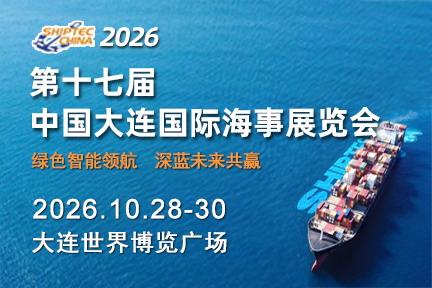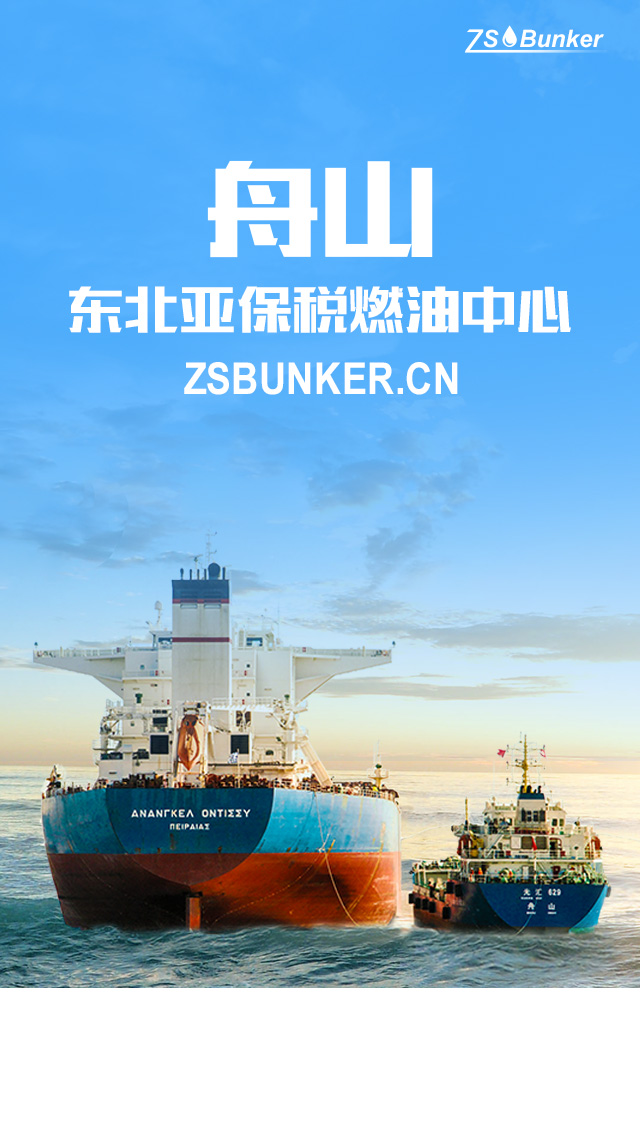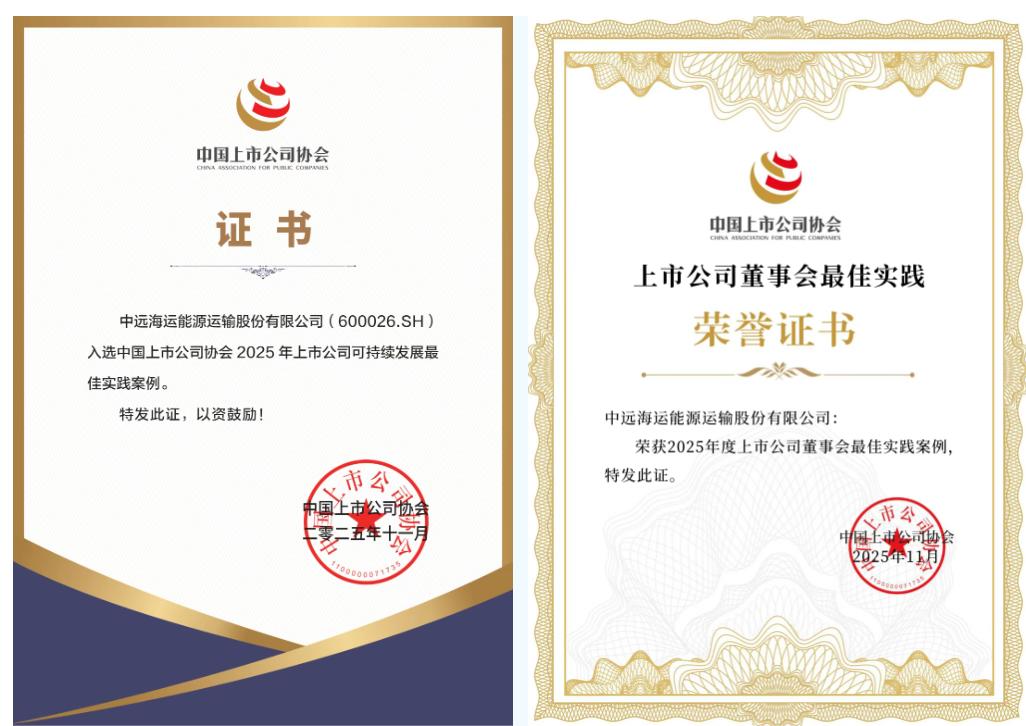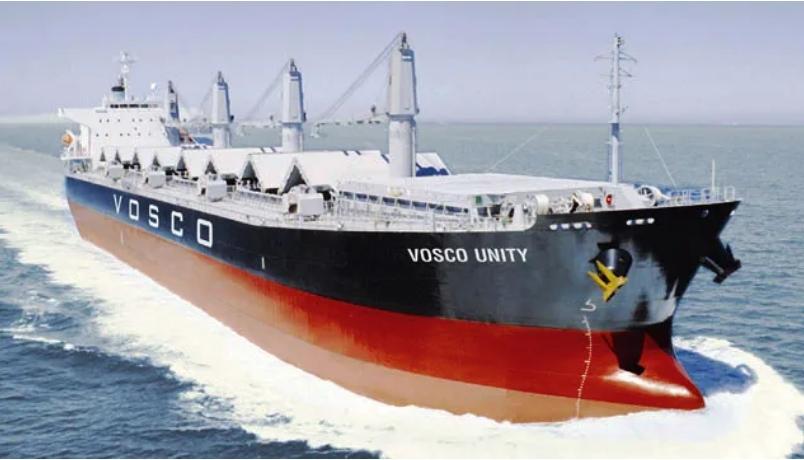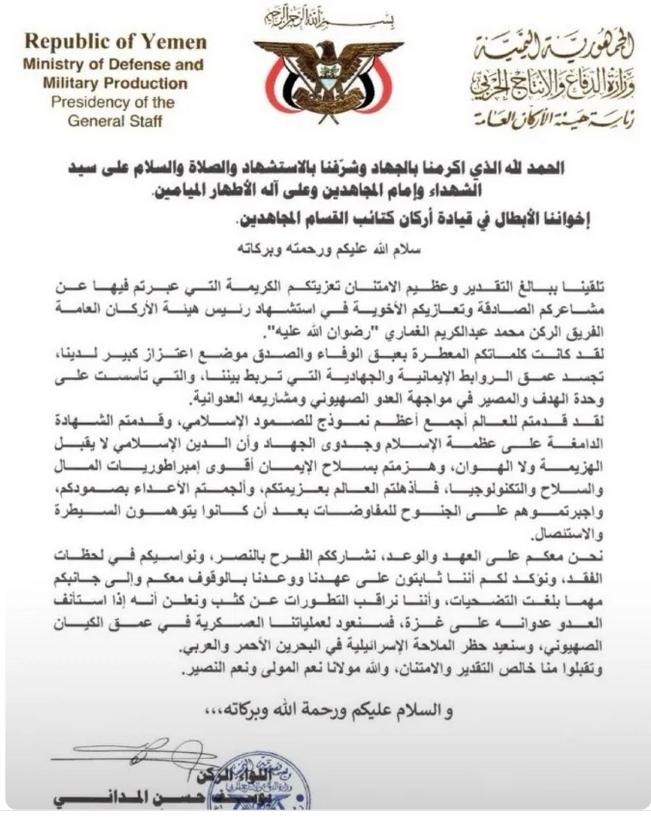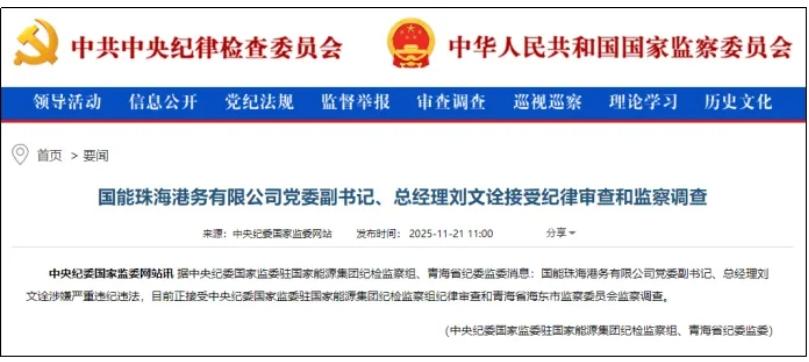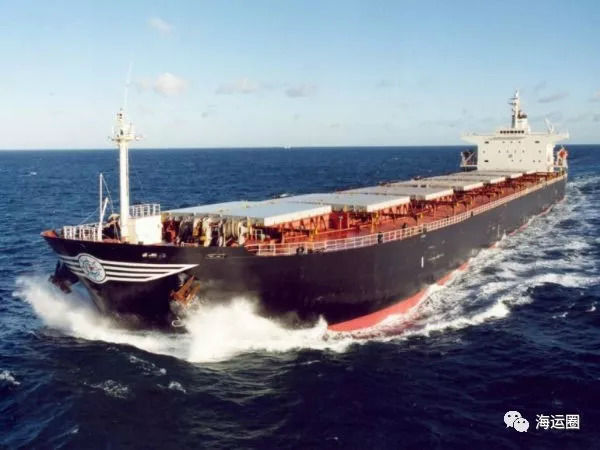
针对上篇关于长江口大雾封港封航的问题,某协会认为依据租船合同的相关条款,认为是泊位租约。依据The“Kyzikos”案所确立的原则,WIBON并不适用于泊位空着的情况。先不论协会观点正确与否,不妨回头回过头来简单回顾一下所D轮所涉及的相关条款:
3.Discharge port: 1 sbp Nantong, China
11.NOR to be tendered upon vessel’s arrival at load & discharge portsATDNSHINC WWWW. At discharge port the NOR should be tendered at Changjiangkou at any time day or night, WWWW.
12.NOR to be tendered with email/fax ATDNSHINC, WWWW. Laytime commenced after 12hours turn time, unless loading/discharging commence sooner, In which case theactual time to count. Laytime cease to count on loading/discharging completed.
15.Otherwise as per GENCON C/P 1994.
16.Arbitration in Hong Kong and English law to apply.
17. At loadport time spend for initial and final draft survey, at discharge port first shifting from anchorage area to berth, shall not to count as laytime.
及GENCON94第6条第109行到116行相关的条文,如下:
If the loading/discharging berth is not availableon the Vessel's arrival at or offthe portofloading/discharging, the Vessel shall be entitled to give notice of readiness withinordinaryoffice hours on arrival there,whether in free pratiqueor not, whether customs clearedornot. Laytime or time ondemurrage shall then count as if she were inberth and in all respectsreadyfor loading/ discharging provided that the Master warrants thatshe is in fact readyin all respects. Time used inmoving from the place of waiting to theloading/ discharging berth shall not count as laytime.
某协会据此给出的意见如下:
We have considered the documents and have the following comments on the general legal position.
We note that the CP is a berth CP butcontains the “whether in berth or not” exception. However, the case ofThe Kyzikos [1989] held that such WIBON exception only applies to cases where aberth was not available, instead of cases where a berth was available but was unreachable by reason of bad weather. Laytime began to run after thevessel was berthed.
We also note that Clause 6c of GENCON 1994,which is also incorporated into the CP, has also provided for the time ofcommencement of laytime. However, such clause has only provided for thescenario that the discharging berth is not “available” on the vessel’sarrival. There are authorities (see para. 3.465 of Laytime and Demurrage)suggesting that such clause may not apply to situation where the berth couldnot be accessed due to weather.
As such, Members have to be clear about whether at the time of tendering of the NOR, the discharge berth was occupieddue to congestion, or it was not occupied but just that it was not accessible due to dense fog.
该协会提到Laytime and Demurrage一书第3.465 ,也不妨先来看看该条。
3.465 What is said at paragraphs 3.446 and 3.447 above presumably applies to the first part of the above about where notice of readiness can be given if a berthis not available. The Bimco guidelines accompanying the introduction of theGencon94 form of charter suggest that the change in Clause 6c from the 1976charter lies in the final sentence and therefore the new wording with itsreference to “arrival at or off the port” continues to apply the geographicall imitations of a Time lost in waiting for berth provision (see paragraph 3.454above). The word used is “available” not “accessible”, an importantdistinction. The use of this phrase presumably confines its application tonon-availability due to congestion and excludes a situation where the berth isnot reachable due to weather. Thus Clause 6c continues to allow notice to be given outside but close to port limits if congestion is the cause of the delay.
即在上文第3.446段和第3.447段所讲的原则,推测起来大概也适用于上段第一部分关于无空闲泊位递交通知书的情况。BIMCO推荐金康94租船合同格式的同时也提供了一些指导原则,其中建议金康1976租船合同格式第6c条款中的变化是在于最后一句。因此,提到“抵达港口或港外”这一新的措辞,仍旧适用于等泊损失条款的地理范围限制(见上文第3.454段)。使用“空闲可用的”这一词与“自由可进入的”一词是有着重要的区别。这一短语的作用大概是把它限定在因港口拥挤导致的泊位不可用性,而排除因天气原因导致不能抵达泊位的情形。所以,如果延迟的原因是港口拥挤,第6c条款仍旧允许在港外递交通知书,但,船舶必须位于港界附近。
又如,在另一起争议中,U轮的租船确认书中关于装货港的描述为:1sbp, VOH, India。U轮出租人的协会也认为该租约为泊位租约,由于在锚地递交NOR的时候,泊位是空着的,因此只能等靠泊的时候才开始起算。当然这里有个问题,之前文章已经说过,如果NOR在递交的时候无效,那么通常不会在事后自动变成有效;如果承租人不存在弃权的情况下,如The “Happy Day”案中所说,那么laytime也不会在装货的时候就自动开始起算。当然这是另外的话题,不在本文重述。协会就1sbp, VOH, India的解释给予了如下答复。
After having a look of the documents, we are ofthe view that the laytime may not commence to run until she was in berth. Asmentioned, the recap provides load port as "1sbp, VOH, India". Thisprobably means "1 safe berth 1 safe port VOH, India", and the voyagecharterparty is more likely to be a berth charter than a port charter. As aresult, the ship is not an arrived ship yet until she is secured or moored atthe loading berth. Although NOR is allowed to be tendered "whether inberth or not" in accordance with Annexure - VI to VOH Sales Contract, the English law has held that this term ("WIBON") does not protect Ownersagainst delay if the berth was available (please see attached the Kyzikos[1989] 1 Lloyd's Rep 1 (HL) - where the ship was unable to berth due to fogweather, and the House of Lord held that "WIBON" cannot convert aberth charter into a port charter in case the berth was available.) We notefrom Member's message that the loading berth (OB1) was vacant and available between 15/01/2019 (when NOR was tendered) and 18/01/2019, thus, as explained,the WIBON cannot protect Owners against the delay before she was in berth.
It was mentioned that MV SHERE E PUNJAB berthed at OB2 on 16/01/2019. Did thisship berthing affect the berthing plan of U at OB1? If not, it would be more difficult for Owners to argue that OB1 was not available at the time.
For the above, we view that unless Member can prove the berth was unavailable or occupied then, the laytime likely starts to run when the ship was secured atberth on 18/01/2019.
笔者并不认同协会的该观点,因此起草如下电邮答复协会。
Dear Sirs,
RE: MV “U” – Dispute in laytime calculation
Refer to last comments from our club, We well aware that on authority the case of The “Kyzikos” [1989] 1 Lloyd’s Rep.1, Even thought this charterparty contains the “whether in berth or not”exception, which still could not protect Owners. In that case thei rLordship held that such WIBON exception only applies to cases where a berth was not available, instead of cases where a berth was available but was unreachable by reason of bad weather, inthat case was fog. Laytime began to run after the vessel was berthed.
We also note that Clause 6c of GENCON 1994, which is also incorporated into the Fixture Note-OtherTerms/Conditions, has also provided for the time of commencement of laytime. However, such clause has only provided for the scenario that the discharging berth is not “available” on the vessel’s arrival. There are authorities (see para. 3.465 of Laytime and Demurrage) suggesting that such clause may not apply to situation where the berth could not be accessed due to weather.
In club their view that this charterparty is more likely to be a berth charter and laytime onlycould commence upon got longside designed berth. But we haveconsideredthe documents, By contrast, This charterparty is a port charter rather than berth charter. We have the following comments on the general legal position.
It’s common ground that there are at least 2 berths, i.e OB-1 & OB-2 are suitable for this size vessel calling Visakhapatnam for loading this kind of cargo. There is not sole loading berth for ourvessel, Our vessel made all fast at OB-1 just follow port authority or shippertheir arrangement. The charterers’ right merely an implied right which the charterers have to “select”, there is no power of nomination expressly given inthis charterparty.
Per Lord Oaksey said in Stag Line v Board of Trade (1950) 84 Ll.L.Rep.1 case, In his judgement at page 3 left hand column, Where he said:
The matter turns almost entirely upon the construction of the charter-party, and it is common ground that the law in regard to the matteris settled. The principle of it is stated by Mr. Justice Devlin in his judgment (83 Ll.L.Rep. at p. 358):
If the berth at which the vessel ultimately has to load or discharge is named in the charter-party, she is not an arrived ship untilshe arrives at the berth, and by named in the charter-party I mean either namedin it when originally drafted or named in it by virtue of a power of nomination expressly given by the charter-party. If, on the other hand, there is no power of nomination expressly given so that no berth is named therein, and she proceeds to the berth ordered by the charterers merely by virtue of the impliedright which the charterers have to select the loading berth, then she becomes an arrived ship when she arrives at the place then named in the charter-party which is the port.
Thus this charter should be aport charter.
For classfic definition of port charter and berth charter, We may refer to leading case The “Kyzikos” [1989] 1 Lloyd’sRep.1 (H.L.). In this case, Lord Brandon of Oakbrook said at p 4 right handcolumn:
First,the contractual destination of the chartered ship is a named port.
Secondly,the ship, in order to qualify as having arrived at the port, and thereforeentitled to give notice of readiness to discharge, must satisfy twoconditions.
The first condition is that, if she cannot immediately proceed to a berth, she hasreached a position within the port where waiting ships usually lie. The second condition is that she is at the immediate and effective disposition of the charterers.
By contrast, the characteristics of a berth charterparty are these.
First,the contractual destination of the chartered ship is a berth designated by the charterers within a named port.
Secondly,the ship, in order to qualify as an arrived ship, and therefore entitled togive notice of readiness to discharge, must (unless the charterparty otherwise provides) have reached the berth and be ready to begin discharging.
The charter-party was on the Gencon 1974 printed form with concerned clauses inthis case were as follows:
1/2 safe always afloat, always accessible berth(s) each port - 1/2 safe port(s) U.S. Gulfexcluded Brownsville and no port North of Baton Rouge.
Box 15. Laytime allowed for loading (Cl. 5)
See clause 17
Box 17. Laytime allowed for discharging (Cl. 6)
See clause 17
Box 18. Demurrage rate (load and disch) (Cl. 7)
USD. 3.000, - perday/pro rata . . .
Clause 1. . . . the vessel shall proceed to the discharging port or place stated in Box 11 or sonear thereto as she may safely get . . .
Clause 5. Loading . .. Time to commence at 2 p.m. if notice of readiness to load is given before noon and at 8 a.m. next working day if notice given during office hours after noon . . . Time lost in waiting for berth to count as loading time.Time to count as per Clause 5 Wipon/Wibon/Wifpon/Wccon and master tohave the right to tender notice of readiness by cable, both in the loading anddischarging port(s).
Clause 6. Discharging Cargo to be received by merchants . . . and to be discharged in the number of running working days stated in Box 17. Time to commence at 2 p.m. ifnotice of readiness to discharge is given before noon and 8 a.m. next working day if notice given during office hours after noon. Time lost in waiting for berth to count as discharging time.
But in our case, U charter-party which contains additional other provisions, Especially:
1. Clause4 of Rider clauses:
…Time from moving from anchorage to berths hall not count as laytime…
2. VOH Sale Contract, ANNEXURE –VI (a) 2.Laytime – (A) Tender of Notice of Readiness:
Notice of Readiness to load shall be tendered on any days, at any time in or out ofoffice hours and even before commencement of laydays when the vessel is in free pratique with clean holds, and is ready in every respect to load, whether in berth or not.
3. VOH Sale Contract, ANNEXURE –VI (a) 2.Laytime – (B) Commencement of Laytime: b)
Laytime for loading shall commence 12 running hours after tender of Notice of Readiness unless loading is sooner commenced,in which case, the time actually used.
4. VOH Sale Contract, ANNEXURE –VI (a) 2.Laytime – (C) Counting of Laytime:
a) Time taken in waiting for tide by a vessel with sailing draft, as set forth in Article 8, or less shall count as laytime except in the case of abnormally lowtide and/or in the case of abnormal sea and weather conditions.
b) Shifting time and expense for shifting of vessel from waiting berth to loading berth shall be to the account of the vessel.
c) Time lostin waiting for berth shall count as laytime unless otherwise stipulated in thisContract.
It’s long established that a contract must be construed as a whole. We must read all clauses togetherto decide whether this is a berth charter or port charter. On the other hand ,Asin CSSA Chartering and Shipping Services SA v Mitsui OSK Lines Ltd (The “Pacific Voyager”)[2018] EWCA Civ 2413 case ,Where LordLongmore said:
I would formy part accept Mr Croall's first submission to the extent that every charterparty must be construed on its own terms; so far, so uncontroversial. But in a business world (such as the shipping world) previous decisions on thesame or similar clauses must be treated as authoritative in the interests of business certainty. Although phrases such as "hallowed doctrine"(pace Staughton J in the Rio Claro [1987] 2 Lloyds Rep 173, 179) should perhapsbest be avoided, previous cases on similar wording should be regarded as helpful guides in situations similar to situations that have arisen before.
See also in Evera S.A. Commercial v North Shipping Co Ltd(The “North Anglia”)[1956] 2Lloyds Rep. 367 case,Where Justice Devlin( as then he was ) said:
I suppose I might have said that, where the same words are used in the charter-party as the words that have already been construed in theCourt of Appeal, then, notwithstanding that this a different charter-party, I should be bound, looking at those words by themselves, to follow Monroe Brothers, Ltd. v. Ryan, sup. But I have dealt with it myself in deference toMr. Ashton Roskill's submission that Monroe Brothers, Ltd. v. Ryan, sup., laiddown no rule on this point. Indeed, strictly, I do not think that an authority can lay down any rule about construing another charter-party. But that is thenatural construction which, in any event, should be put upon those words.
So the authority of The “Kyzikos” case could not lay down any rule about construing our U case. The natural construction should be put upon those special clauses.
By contrast, We wish to draw our attention to London Arbitration 1/09 772 LMLN 3 case. In that case , The vessel was chartered onthe Gencon form with additional clauses for a voyage carrying 30,875 mt ofsodium sulphate in bags “1 SBP [safe port/berth] ZHENJIANG, CHINA/1 SBP [safeport/berth] VITORIA, BRAZIL”.
The charterers said that as the words “1 SBP ZHENJIANG, CHINA/1 SBP VITORIA, BRAZIL” were in essence the same as the words, “one safe berth, London”
(The Finix [1975] 2 Lloyd’s Rep 415), the charter was a berth charter. The charter included a WIBON clause, which would be unnecessary in a port charter.
Held that other clauses in the charterparty were also relevant, namely:
Clause20(a):
“At first Loading Port, NOR should be tendered uponvessel’s arrival on road, even by cable/vhf/tlx, within local office hours(0800 hours Monday to 1700 hours Friday), Saturday, Sundays and Public Holidaysexcluded, provided vessel is in all respects ready to load the cargo for whichit has been nominated, whether in berth or not, whether in port or not, whethercustom cleared or not, whether in free pratique or not.”
Clause 20(c):
“Vessel shall be deemed to have arrived upon vessel beingbrought up at anchor at the inner, outer or usual anchorage…”
Clause 21(a):
“At Loading Port: Laytime shall commence to count at 1400hrs, if NOR validly tendered till 1200 hrs (included) or at 0800 hrs next day,if NOR validly tendered within office local hours after 1200 hrs, time actuallyused in discharging before commencement of Laytime shall count as Laytime.”
Clause 21(e), second bullet point: “At Loading and Discharging Ports:
Shifting from anchorage to berth (until the vessel is All Fast Alongside, and ready in allrespects to load/ discharge) shall not count as Laytime.”
Those very specific clauses regarding the giving of NOR, the place at which the vessel was deemed “arrived”, the commencement of laytime, and interruption of laytime shifting from anchorage toberth created a particular regime to which regard had to be paid when calculating laytime. They took the matter far beyond the simple words, “whetherin berth or not” which, in the context of the present charter, were virtually surplusage. In particular, clause 21(e), second bullet point, made it clearthat laytime could begin at the anchorage (as defined more particularly inclause 20(a)). Accordingly the charterers’ submission that the charter was aberth charter would be rejected.
See also to latest 7th Edition,Laytime and Demurrage, Chapter 3 -Commencement of laytime 3.33.
3.33 In London Arbitration 1/09, the tribunal rejected the charterers’ submission that the charter in question was a berth charter inrespect of the load port where it provided for the vessel to load at: 1 SBP Zhenjiang.
The tribunal held it’s a port charter.
For all above given reasons, So far as the authorities are concerned, We could not accept club their views, that the phrase “whether in berth or not” should be interpreted as applying only to cases where a berth isnot available and not also to cases whereh a berth is available but is unreachable by reason of bad weather.Aswe may find that our case there contains same clauses, especially shiftingclause which was stipulated in Rider clause 4.
In the result, We have to maintain that our charterparty is a port charter. Therefore under aport charter, the Master is entitled to tender NOR at 0001hrs on 15th/Jan2019. As it’s a valid NOR which could trigger laytime to commence.
We arelooking forward to receiving your further comments if any.
然而D轮或U轮的条款是否和The “Kyzikos”案有着类似的措辞呢?如果没有类似的措辞,那么很显然,The “Kyzikos”案将对D轮或U轮的争议没有约束力。笔者认为协会无论如何不应该拿The “Kyzikos”案的判决来解释D轮或U轮的租船合同,租船合同应该依据其本身的条款来解释。
接下来就来看看被协会们经常引援的The “Kyzikos” [1989] 1 Lloyd’s Rep.1 (H.L.)案。
一、基本案情
Seacrystal Shipping Ltd (以下简称“出租人”)与Bulk Transport Group Shipping Co.,Ltd(以下简称“承租人”)在1984年10月26日以GENCON格式就其Kyzikos轮(以下简称“该轮”)签订了一份从意大利装钢材或钢材产品到休斯顿卸的程租合同。
该轮于1984年12月17日0645抵达卸港休斯顿并递交NOR,但该轮将靠泊卸货的泊位在递交NOR的时候是空着可用;但是由于大雾原因引航站封航导致无法直接靠泊。该轮最终在12月20日1450靠妥泊位开始卸货,于1985年1月11日1700完货。
出租人主张装卸时间从12月17日的1400开始起算,总共滞期14天9小时16分钟。承租人否认,将争议诉诸仲裁。
所涉及的相关条款如下:
1/2 safe always afloat, always accessible berth(s) each port - 1/2 safe port(s) U.S. Gulf excluded Brownsville and noport North of Baton Rouge.
Box 15. Laytime allowed for loading (Cl. 5)
See clause 17
Box 17. Laytime allowed for discharging (Cl. 6)
See clause 17
Box 18. Demurrage rate (load and disch) (Cl. 7)
USD. 3.000, - per day/pro rata . . .
Clause 1. . . . the vessel shall proceed to thedischarging port or place stated in Box 11 or so near thereto as she may safelyget . . .
Clause 5. Loading . . . Time to commence at 2 p.m.if notice of readiness to load is given before noon and at 8 a.m. nextworking day if notice given during office hours after noon . . . Time lost inwaiting for berth to count as loading time. Time to count as per Clause 5 Wipon/Wibon/Wifpon/Wccon and master to have the right to tender notice of readiness by cable, both inthe loading and discharging port(s).
Clause 6. Discharging Cargo to be received by merchants .. . and to be discharged in the number of running working days stated in Box17. Time to commence at 2 p.m. if notice of readiness to discharge isgiven before noon and 8 a.m. next working day if notice given duringoffice hours after noon. Time lost in waiting for berth to count as dischargingtime.
二、商事法院判决
仲裁员裁定认为合同第5条中包含“WIBON”(whether in berth or not的缩写),因此将该租约变成了港口租约,裁定出租人全额的滞期费索赔成立,承租人提出上诉。
商事法院的Webster法官在第56页判决书中认为,这些先例支持了更为有限的主张,即“Wibon”条款不会超越租船合同所创建的主要义务,或由明确的例外修改的那些义务,并且它原则上不会影响细节,在影响船舶的延误情况下风险将会下降的问题。如果这个更有限的命题是从权威获得的权利,如果它适用于本案的事实,那么仲裁员的裁决似乎是错误的。
Webster法官在第57页判决书中认为,即使与他的结论相反,“Wibon”条款具有将泊位租约转换为港口租约的效果,他会得判定,该轮不是在该港口抵达的船舶,符合Reid勋爵在TheJohanna Oldendorff案中所确立的Reid标准的意义,直到该轮离开她的第二个锚地,因为直到那时该轮“没有立即有效地在承租人的处置之下”,尽管如此,正如仲裁员认定的那样,该轮并没有被用作出租人目的。
Webster法官不同意该具有丰富经验的商业仲裁员的裁决,认为其裁决必须予以撤销;除非是出租人能够成功依靠租船合同第11栏的条款。
而关于“accessible”一词的解释,Webster法官认为其意思是能够接近,意思是采用畅通无阻的方式,“always accessible”这一表达是一种形容词。最终判出租人无法确立承租人是否违反了指定一个时钟可进入的泊位的绝对义务,仲裁裁决被撤销。
出租人不服判决,上诉。
三、上诉法院判决
上诉法院的Lloyd勋爵在第125页判决书中认为,不怀疑该条款最初包括在泊位租约中的原因是为了迎合港口拥挤和泊位不可用的情况。但该条款的措辞中没有任何内容限制其对这种情况的操作。措辞非常笼统。无论在泊位与否,都可以递交NOR。因此,在船舶到达其合同目的地之前,可以递交NOR。当然,必须对该条款作出一些限制。没有人建议在该轮仍然在海上时可以发出递交NOR。
Lloyd勋爵认为如果对该条款有限制,更清楚的是该限制应该参考可以递交NOR的地方,而不是船舶无法前往她的泊位的原因。如同经常说的那样,确定性在这些问题上非常重要。“无论在泊位与否”的传统观点一直是它变得有效,以便一旦船舶抵达港口就能够立即递交有效的NOR,条件是有效的NOR的其他条件得以满足。传统观点作为解释问题是优选的,并且在实践中提供更大程度的确定性。Lloyd勋爵判定 “无论在泊位与否”,一旦船舶抵达港口,就能够递交有效的NOR,即使她无法继续前进的原因不是没有泊位而是恶劣的天气。
Lloyd勋爵认为,上诉法院大多数人认为Buckley勋爵和Roskill勋爵之间的结果没有区别,唯一的区别在于结果应该合理化或表达的方式。Lloyd勋爵认为他会全心全意地支持这种观点。实际上,无论在泊位与否这一措辞的效果是将泊位租约变成港口租约,以便用Diplock勋爵的话说,Reid标准适用于装卸时间的开始。在本案中,法官判决的结果是恢Buckley勋爵和Roskill勋爵之间的区别,并使其具有实际效果。Lloyd勋爵认为这种后果是不受欢迎的,即使它对我们开放。最终上诉法院允许出租人上诉,恢复仲裁员裁决。
承租人不服判决,上诉。
四、贵族院判决
贵族院的Brandon of Oakbrook勋爵在第4页判决书中首先对于这两种租约格式的不同特征进行了分析和归纳,认为:港口租约“Port Charters”:首先,租船的合同目的地是一个指定的港口; 其次,船舶要被认可已到达港口从而可以递交卸货准备就绪通知书(NOR),其必须满足两个条件。第一个条件是,如果船舶不能立即前往泊位,它应该已经到达了港内一个船舶通常停留的地方等泊。第二个条件是,船舶可立即、有效地供承租人差遣。而泊位租约“Berth Charters”:
首先,租船的合同目的地是租约指定港口中的一个指定泊位;其次,船舶已到达港口,从而可以递交卸货准备就绪通知书(NOR),必须(除非租约另有规定)已经到达了该泊位并准备就绪可以开始卸货。
Brandonof Oakbrook勋爵认为在他看来,本案问题的表述尽管简洁明了,但正如他所指出的那样,来自权威倾向于伸缩所涉及的法律问题。在上诉法院作出主审判决的Lloyd勋爵在该上诉提出,可能至少是两个与航次租船合同有关的问题,这是一个共同点,它是一个泊位租约,而不是一个港口租约,但包含了一条允许船舶无论在泊位与否递交NOR的规定。第一个问题是,当船舶到达卸货港时,为她安排了一个泊位,但是在天气恶劣的情况下她被阻止到达,在本案中的原因是雾。第二个问题,只有在第一个问题的回答是肯定的时才出现,是在假定的情况下,船舶是否可以恰当地说是在承租人的立即和有效处置之下,这是必要的船舶有资格成为港口租船合同下的抵港船。
为了回答这个问题,Brandon of Oakbrook勋爵认为有必要考虑两个因素。 第一个考虑因素是与有关权威有关的“无论在泊位与否”这一短语的含义。第二个考虑因素是在本法院所关注的租船合同中可以找到首字母缩略词“WIBON”的背景。Brandon of Oakbrook勋爵认为就权威而言,它们呈现出两个方面,一个是正面的,另一个是负面的。权威的积极方面是,在泊位租船合同中使用的“WIBON”这一短语在很长一段时间内均匀地被解释为与泊位的可用性或不可用性有关。 换句话说,该短语被解释为处理港口拥堵问题,并使承租人而非出租人承担由此类拥堵造成的延误风险。
关于本案中所涉及的租船合同中首字母缩略词“WIBON”的背景,在Brandon of Oakbrook勋爵看来,有关该背景的两个重要特征。第一个重要特征就是,在对租船合同的印刷条款进行类型修改时遵循的一般程序是删除修改后的大部分印刷条款或由此类修订取代。这个一般程序的例子可以在第2条中看到。(部分删除第25和26行),第4条(完全删除)和第5条(删除前两段,第57-67行)。第5条的最后一行打印的(第72行)显示:“等泊时间的损失计入装货时间”。第6条最后一行打印出来的(第80行)显示:“等泊时间的损失计入卸货时间”。如果在第5条和第6条的类型中引入了首字母缩略词“WIBON”,Brandon of Oakbrook勋爵其旨在修改或取代所提及的那些条款的最后两行,人们原本预计这些条款也会被删除。但事实上,这些行并未删除,而是留在原地。要得出的推论是通过对第5条和第6条的类型化添加来引入首字母缩略词“WIBON”,并非旨在修改或替换印刷的这两个条款的最后一行。
关于将要找到首字母缩略词“WIBON”的上下文的第二个重要特征是对第5条和第6条的类型化添加中的紧密关联,与其他三个首字母缩略词,“WIPON”,“WIFPON”和“WCCON”。在Brandonof Oakbrook勋爵看来,最后三个首字母缩略词都是针对装货或卸货港口的拥堵问题,而不是由于恶劣天气造成船舶延误的问题。因此推断缩写词“WIBON”是类似的指导是合理的。首字母缩略词“WIBON”的上下文中的这两个特征在Brandon of Oakbrook勋爵看来支持他之前表达的关于从权威那里得出的关于这个短语的泊位租约中的效果的推论的观点。
首先,Brandonof Oakbrook勋爵认为对该短语的含义没有任界定的话;当然,他接受“无论在泊位与否”这一短语本身并不表示是否在泊位与泊位的可用性有关。但是,Brandon of Oakbrook勋爵不认为很长一段时间内在解释该短语包括泊位租船合同中时,可以忽视长期建立的关于旨在其所赋予的目的的权威。之前提到的权威表明,至少自1912年以来,人们已经认识到这句话的目的是解决所租船舶在抵达目的港但没有找到可供她使用泊位的问题。在此之前还没有任何报道的案例,其中有人曾经有人提出这个短语是为了解决所租船舶在泊位租船合同下,抵达可以为她提供泊位的港口但是恶劣天气阻止它进入该泊位的问题。正如早些时候所指出的那样,这句话一直被视为简写,如果以较长的方式列出,将是“是否在泊位(泊位可用)或不在泊位(泊位不可用)”。这句话已经以这种方式被解释和应用了很长时间,Brandon of Oakbrook勋爵认为它应该继续如此解释和应用。
其次,这句短语传统观点的效果如Lloyd勋爵说,这种观点一直是这个短语变得可运作,以便一旦船舶抵达港口就能够立即递交有效的NOR,条件是满足有效通知书的其他条件。Brandon of Oakbrook勋爵不接受这种概括是正确的,认为就船舶到达时没有泊位的情况而言,这当然是传统观点。但是,到目前为止,船舶在抵达时可以使用泊位但由于恶劣天气无法到达的情况,从未建立过任何传统观点,原因很简单,就是在这种情况下该短语的影响问题以前从未因任何法院的判决而产生。正如他之前所说的,Roskill勋爵在E. L. Oldendorff & Co. G.m.b.H v. Tradax Export S.A., [1972] 2Lloyd's Rep. 292 案中在第312页;[1974] A.C. 429 在第515页,该短语的效果是将泊位租船合同转换为港口租船合同,并且仅针对船舶抵达时没有泊位的情况作出。Brandon of Oakbrook勋爵认为没有充分的理由将该说法应用于完全不同的情况,即船舶在抵达时可以使用泊位但是恶劣天气阻止她继续前进。
再次,需要确定性。Brandon of Oakbrook勋爵认为他接受解释的确定性是任何合同的最理想特征,尤其是包含通常使用的表达的商业合同。然而,无法看到,“无论在泊位与否”这一短语仅在泊位不可用时生效的判决所提供的确定性不如当泊位可用但由于恶劣的天气无法抵达而生效的判决所提供的确定性更低。
Brandon of Oakbrook勋爵他非常尊重Lloyd勋爵和同意他观点的其他上诉法院的成员,但鉴于他对Lloyd勋爵所依据的三个主要事项的审查,不认为他们为他的结论提供支持。相反,Brandonof Oakbrook勋爵认为,考虑到他之前提到的权威以及在有关的租船合同中找到首字母缩略词“WIBON”的背景,即“WIBON”-“无论在泊位与否”这一短语应该被解释为仅适用于没有泊位的情况,而不适用于有泊位但由于天气恶劣而无法到达的情况。
最终,Brandonof Oakbrook勋爵允许上诉,搁置上诉法院的判决并恢复Webster法官的判决,承租人无需承担因为大雾导致靠泊延误的责任。
贵族院的Templeman勋爵,Ackner勋爵及Oliver of Aylmerton勋爵也一致同意Brandon of Oakbrook勋爵的判决,承租人上诉成功。
总结:
如Brandon of Oakbrook勋爵在本案中所说,解释的确定性是任何合同的最理想特征,尤其是包含通常使用的表达的商业合同。关于合同解释,之前文章多次强调,英国是判例法国家,普通法的合约解释是连续性的而不是变化,英国法律作为商业事宜选择法律制度的一个吸引力在于其稳定性和连续性,特别是在合约解释方面。那么合约的解释的必然结果是,为了商业的确定性,有相同或类似条款的判决对后续的争议案件有约束力。因此在有相同条款或类似措辞的情况下,必须遵循先例。
笔者完全认同,本文开头所提到的D轮的租约或U轮租约的相关条款和The “Kyzikos”案中的条款一致,那么完全应该遵循贵族院在The “Kyzikos”案的判决,即WIBON仅适用在泊位被占的情况下,如果仅仅因为大雾等原因导致封港封航,而泊位仍是空着,那么WIBON例外就不适用。因此在泊位租约下,船舶必须抵达泊位成为抵达船后才可以递交有效的NOR,除非是合同有相反的规定,比如明确说不管泊位是否被占,都可以在习惯性等泊锚地递交有效的NOR。
另一方面,The “Kyzikos”案条款中关于WIBON出现的位置如下,说的是Timeto count as per Clause 5 WIPON/WIBON/WIFPON/WCCON,即时间按第5条计算,然后连接了可以起算的情况,WWWW。
Time to count as per Clause5 Wipon/Wibon/Wifpon/Wccon and master to have the right to tender notice of readiness by cable, both in the loading and discharging port(s).
这里并没有说船长可以在WWWW的情况下递交NOR,笔者认为这两种情况,解释起来还是有不一样的地方。前者说laytime计算,如果NOR有效(泊位被占的情况下,开始laytime计算的前提之一NOR必须有效),那么就可以在WWWW的情况下开始起算。后者仅仅是说NOR在WWWW的情况下可以递交,至于laytime如何起算,还得去看合同的其它条款。合约的解释必须把合同当作一个整体来看待,不能单独看某个条款。笔者认为,The “Kyzikos”案中贵族院的解释完全正确,laytime计算和NOR递交之间并不存在冲突。Laytime是可以在WIBON的情况下开始起算,但laytime开始起算有一个前提是必须有一个有效的NOR去触发,而依据合同其它条款,在泊位租约下NOR必须在抵达泊位才能递交;没有有效的NOR,因此laytime不会开始起算,WIBON对出租人而言并没有起到保护的作用。
然而,合约的解释原则如Longmore勋爵在CSSA Chartering and ShippingServices SA v Mitsui OSK Lines Ltd (The “Pacific Voyager”)[2018] EWCA Civ 2413案中所说,Longmore勋爵认为,每份租船合同都必须按照其本身的条款来解释,到目前为止,这是无可争议。但是在商业世界(例如航运界),为了商业确定性,必须将之前关于相同或类似条款的判决视为具有权威性。尽管应该最好避免使用诸如“神圣主义”这样的短语,但是之前出现过的类似措辞的先前案例应该被视为类似于有类似情况的案件的有用指南。
又如在Evera S.A. Commercial v North Shipping Co Ltd(The “North Anglia”) [1956] 2 Lloyds Rep. 367案中,Devlin法官(当时是)在第374页判决书右手栏中认为如果在租船合同中使用相同的措辞作为上诉法院已经解释过的措辞,那么,尽管这是一个不同的租船合同,他应该受到MonroeBrothers, Ltd. v. Ryan案判决的约束。Devlin法官认为如他自处理了出租人代表律师的主张,即MonroeBrothers, Ltd. v. Ryan案并没有对该点提出任何规则。Devlin法官认为事实上,严格来说,他并不认为权威当局可以制定任何关于解释另一个租船合同的规则,但是无论如何那些措辞应该赋予其自然解释。
因此在The “Kyzikos”案中所确立的在其特定租约条款的背景之下,缩写短语“WIBON”仅适用于泊位不可用(被占)的情况而不适用于有泊位但由于天气恶劣而无法到达的情况,该权威并不能被用来解释本文开头所提到的D轮的租约或U轮租约下所产生的争议问题。因为这些租约均有额外不同的条款,每份租船合同都必须按照其本身的条款来解释,这些额外条款必须赋予其自然解释。比如D轮的租船合同中明确规定“At discharge port the NOR should be tendered at Changjiangkou at any time day or night, WWWW.”,那么依据该条款来解释,自然含义就是在卸港NOR需要在长江口递交。
基于所给出的这些理由,笔者认为协会在引援The“Kyzikos”案时忽视了其特定的条款,从而错误地认为 “1sb, London”类型租船合同的为泊位租约,WIBON仅适用于泊位被占的情况,该观点应该予以纠正。反之,如果租船合同中仅仅简单规定,“At loading port and dischargeport, NOR to be tender upon arrival ATDNSHINC, WWWW”,而合同中又规定其余依据GENCON94。那么这个WWWW并不足以保护出租人,因为依据GENCON94格式第6条关于Laytime第109行相关的条文,如下:
…If the loading/dischargingb erth is not available on the Vessel's arrival at or off the portof loading/discharging, the Vessel shall be entitled to ...
该条款明确规定仅仅在装卸泊位不可用的情况下,船舶才有权利在抵达港口之后递交NOR。在这种情况下,The“Kyzikos”案的权威将对这类合同有约束力。
传统上关于泊位租约和港口租约的界定问题,笔者认为可以简单地归纳如下:
1)如果租船合同中有明确条款规定,NOR可以在习惯性等泊位置递交并且有效可以起算Laytime的话,那么不管装卸港如何描述,该租约可理解为港口租约;
2) 相反,如果租船合同中明确条款规定,NOR只能在抵达装卸泊位递交才有效然后开始起算Laytime,那么不管装卸港如何描述,该租约可理解为泊位租约。
这种简单的归纳可以很容易去区分泊位租约还是港口租约,但实际上,泊位租约还是港口租约,其重点就是界定如何去递交一个有效的NOR以便触发laytime开始起算。如果租船合同中已经有明确条款规定在习惯性等泊位置递交并且可以起算laytime,作为租约的解释原则,明确措辞必然赋予其自然含义;而协会们所解释的是去否定这些明确措辞的含义,违反了基本的合约解释原则,因此得出的结论出现了偏差。
(补充说明,近期London Arbitration 12/19一案,作出了与本文笔者观点一致的裁决,随后附上。)
海运圈聚焦专栏作者 Alex (微信公众号 航运佬)

 2019-06-01
2019-06-01 1229
1229 




